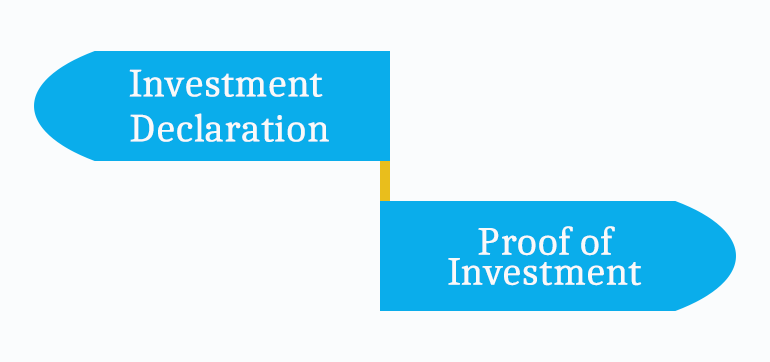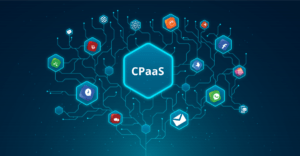A Guide to Investment Proof Verification Using HR Software
Investment Proof Verification Using HR Software
Investment proof is typically a form on which employees acknowledge an investment they made in the preceding fiscal year. These investments enable employees to benefit from taxes under sections of the Income Tax Act, such as 80D or 80C. An HR Software can declare employee’s investments for a seamless tax calculation process.
Employers are should, by law, deduct TDS after calculating income tax and to remit it monthly. When the fiscal year begins, companies must gather declarations from their employees detailing their savings, house rents, and investments for them to be eligible for salary exemption, also known as Income Tax Declaration.
While doing the calculation of the income tax for the employee, the two main factors are the following:
Exemption:
According to Indian tax legislation, an exemption is an income that is not taxed. An example is a house rent allowance (HRA) paid by an employer. A portion of the rent paid by a salaried employee to a landlord is exempt.
The amount of the exemption is determined by the city (metro or non-metro) where the employee resides, and the proof of rent payment is presented.
Deduction:
A deduction is a sum of money deducted from an employee’s taxable income. This category includes eligible savings and donations. These deductions are made during payroll processing and contribute to reducing an employee’s net taxable income.
The tax calculated at the end is divided into equal monthly installments. It is eventually deducted from the employee’s monthly salary.
When the fourth quarter of the fiscal year begins, employees must preserve their documented proof for deductions and exemptions claimed at the start of the year on hand.
Investment Declaration Vs. Proof of Investment

Investment Declaration
An investment declaration is issued when an employee begins working for a new company or at the start of the fiscal year.
A declaration, submitted using Form 12BB, comprises the proposed investments and expenditures for the current fiscal year. These are eligible for specific tax breaks and exemptions.
Proof of Investment
Every employee is expected to produce proof of planned and made investments in January or February. The Payroll department computes the ultimate tax liability for the year and makes the required changes.
The previous calculation would have relied on the investment declaration, which is merely an estimate.
The tax deduction granted in March is based only on these proofs and not on declarations. The employer must dismiss claims not supported by appropriate evidence.
Companies with more than 50 workers should complete the collection of investment-proof processes by the end of January. This will allow the HR department ample time to calculate the final tax for the year and have it submitted in March.
The POI gathering procedure should plan and execute properly. A perfect initial verification can prevent many errors and build a smooth road. The HR department must determine the POI window’s start and end date.
There are seven most common POIs that employers must properly evaluate and verify. Let’s Take a Look at the 7 Important POIs:

HRA (House Rent Allowance)
HRA is a component of the wage structure that employees can claim as a deduction. Employers in this area will require to collect rent agreements and receipts. The owner’s PAN card must obtain if the rent exceeds one lac rupees per year.
Housing Loan EMIs
In this case, the employer must get certificates from the employee’s bank, which approved the loan. The whole principal amount and interest paid should stat on the certificate.
Education Fees for Children
Employees who pay fees for their children’s education can claim a deduction under section 80C. The maximum exemption amount is Rs 1.5 lakhs per parent. The employer must collect school, college, or other institution fee receipts from the employee.
Life Insurance Premium
In this case, the employer should collect receipts for the premium paid. Employees might claim an exemption for their spouse or children in this case.
Mutual Funds
This falls under the ELSS system and is tax deductible under Section 80C. An employee must produce an Investment Declaration Statement to the employer to obtain an exemption as a POI document.
80D Medical Insurance
Employees can claim a deduction for medical expenses and medical insurance for senior citizen-dependent parents under section 80D. Different age groups have different exemptions.
Public Provident Fund (PPF)
Under Section 80C, PPF account holders are eligible for tax-free returns of up to Rs 1.5 lakhs each year. PPF Account Statement or Passbook Scan must supply to the employer.
7 Steps to Process POI Seamlessly

Planning
Before collecting and validating Proof of Investment, the entire procedure must map out. This should be followed by deciding how long the window should be available for employees to submit the POI. As a result, the deadline for submitting POI should announce to employees.
Collection of Proofs
The proof should gather in the set time-frame in physical form or a soft copy via email.
Resolve Issues
Ensure that staff is aware of the POI submission process and that all of their questions answers. The financial department should be ready for assistance via phone or mail.
Verify Submitted POI
Here, employees’ reported investments compares to real proof. Following verification, the employer can either reject or accept POI.
If the evidence matches the investment declaration made by the employee at the beginning of the fiscal year or if no documents are missing, the POI may allow.
Re-collect POI
The POI must recollect if the employee’s proof is invalid, partial, or does not match the shared investment declaration.
Verify POI Again
Before submitting the POI documents, they should re-verify to ensure that the proofs are correct.
Payroll Computation and Follow-Ups
After collecting and re-verifying POI papers, the employee’s income tax should re-calculate. Based on income tax computations, this tax should deduct from employees’ take-home pay.
Employees’ TDS adjusts accordingly. Aside from the computation, there are activities to complete after collecting the POIs, such as filing the proofs for future reference.
Investment proof verification is important for HR departments since it allows them to validate their employees’ tax-saving investments and process their payments accordingly.
In addition, a Human Resource Management System (HRMS) software can help to automate and streamline this procedure. Here are several ways in which HRMS software can assist organizations’ HR departments with investment evidence verification:
Database Centralization
An HRMS software enables the human resources department to keep a centralized database of all employee investment proofs. This allows them to easily access and check the documents while eliminating the need for human record-keeping.
Real-time Tracking
The HR department can track the status of each employee’s investment evidence verification in real-time using HRMS software. This enables them to spot any anomalies or delays and take corrective action as soon as possible.
Taxation Challan Generation
An HRMS program can automatically create PF and ESI Challan. This saves the HR department important time, which may be to streamline the process, improve compliance, and eliminate errors. It can also generate PT that adheres to all state-specific regulations.
HR Software: They Way Forward
HRMS software can assist businesses’ HR departments in investment evidence verification by automating and streamlining the process, decreasing manual efforts, and enhancing accuracy and compliance.
Get your HR Software today to ensure seamless HR management and tax compliance management for your business







